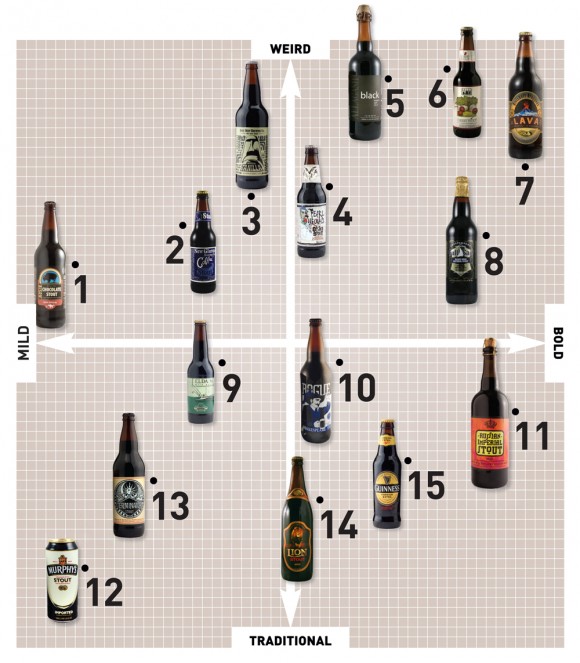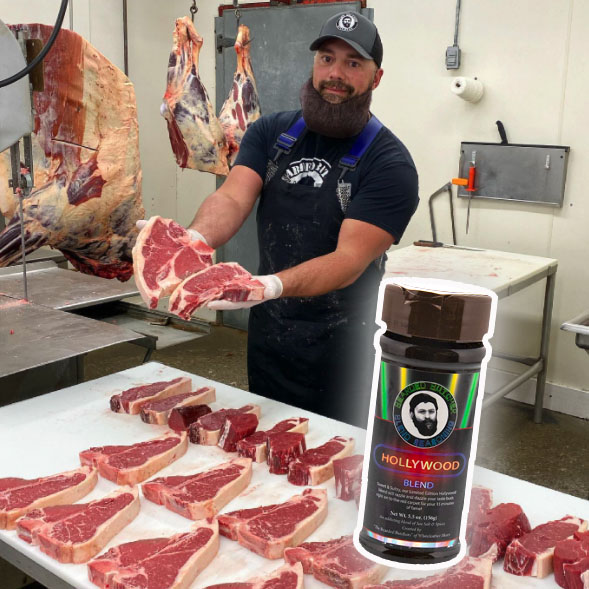The Stout Matrix
Featured by: Draft Magazine
November/December 2014
Practically black and forever brooding, stout’s claim to fame is its swirls of cocoa, coffee, char and cola notes extracted from roasted malt. But the style’s ever-expanding with fruit, barrels and hops shining new light into our favorite dark brew. In honor of International Stout Day, please enjoy the Stout breakdown. Cheers!

1. Cocoa conspires with all that dark roast to elevate chocolate stouts to confectionary status.
2. Coffee stouts give a double jolt: The first from real coffee (beans or cold brew!) in the batch, the second from some bonus booze.
3. Beans in the brew give vanilla stouts a floral, high-pitched sweetness.
4. Real bivalves—meat and shells!—lend a distinct brininess to oyster stouts.
5. Funky, fruity Belgian yeast gives Belgian stouts a strangely alluring sweet spice.
6. Blueberries, pineapple, squash; there’s no limit to the sweet stuff brewers will slip into a fruit stout.
7. Smoldering smoked stouts spark a little campfire (via smoked malts) in every sip.
8. Sturdy malts make stouts good for wood. Barrel-aged stouts nap in new vats or ones that once held rum, whiskey or wine; they emerge mature and high in alcohol.
9. A little lactose in the brew gives sweet stouts velvety creaminess and a milky-sweet smirk.
10. Oatmeal stouts augment roasted barley with sweet oats for a chewy, crazy-creamy mouthfeel.
11. Intense roast, complex malts and high alcohol make imperial stouts some of beer’s biggest boozers.
12. Sessionable dry stouts are a step up from porters—and fish ‘n’ chips best friend.
13. Bitter U.S. hops color American stouts with subtle greenness.
14. Like foreign extra stouts but sweeter, tropical stouts dial up their fruit and molasses flavors.
15. Assertive roast headlines foreign extra stouts, but ABVs under 8% keep them manageable.
Featured by: Draft Magazine

